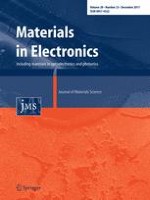19.08.2017
Size effect on microstructure and tensile properties of Sn3.0Ag0.5Cu solder joints
Erschienen in: Journal of Materials Science: Materials in Electronics | Ausgabe 23/2017
EinloggenAktivieren Sie unsere intelligente Suche, um passende Fachinhalte oder Patente zu finden.
Wählen Sie Textabschnitte aus um mit Künstlicher Intelligenz passenden Patente zu finden. powered by
Markieren Sie Textabschnitte, um KI-gestützt weitere passende Inhalte zu finden. powered by
